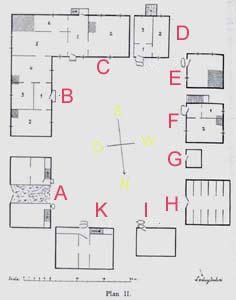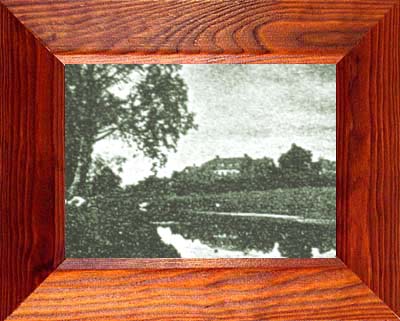
The Vicarage in Kungsgården
-the old Grimstad
If this place could talk, many exciting tales and secrets would be revealed. Grimstad is one of the oldest estates in the district. Families were probably residing here already during the 7th century. The houses on the estate have during the years been rebuilt. During the last 700 years it has been used as vicarage and visited by the poorest in society as well as royalties.
Grimstad - the beginning
No one knows exactly when Grimstad became the vicarage, but it happened probably during the 12th century. The reason why the old Grimstad became the vicarage of the parish is most likely because Christian domesticity was carried out here long before the first priest moved in, while the heathen sacrifices were still carried up the hill at Wijbol (where the manor is) close by.
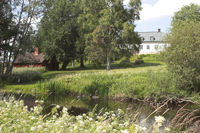 During
the 7th and 8th century it was common to name the estates after their
owners and add the Swedish word "stad". Grimstad mean Grim's
place or estate. Everything points to that the original Grimstad was situated
on the hill by the river, where the vicarage still is today.
During
the 7th and 8th century it was common to name the estates after their
owners and add the Swedish word "stad". Grimstad mean Grim's
place or estate. Everything points to that the original Grimstad was situated
on the hill by the river, where the vicarage still is today.
The fact that the estate has a long history is proven for instance by a rune stone being found by the vicarage in the slope towards the river. The rune stone was probably erected some time during the 12th century. The runic inscription reads "Two men, Rualt and Utr once erected over Irm...". It could have meant that the stone was erected by the sons Rualt and Utr in memory of their father, Irm. In 1928 a second rune was found in the vicarages garden on which the names Björn and Sigbjörn could be read. Supposedly these five men have somehow been connected to this place around the middle of the 12th century.
A description of land and property from 1293 shows that parts of land in Ginborn, Hammarby and Järbo belonged to the estate. In this report the vicarage is called Grimstad.
It is a fact that a church could be found in Kungsgården during the 13th century and the vicar probably lived at Grimstad. According to law at that time, a vicarage should include seven houses: house, cooking house, barn, storehouse for crops, pantry, lodging and cattle shed.
Nothing has been written down about the people who lived in the vicarage during the 13th century. The first names in texts are from the 14th century as "Värnrik (1334)", "Laurentz Pädersson (1416)" and "Petrus (1443)".
|
Ovansjö vicarage (the manor) during the 17th century. A. Door shed with loft shed in 2 stories towards north and south B. Manor house: 1. Entrance, 2. Sitting room, 3. Rest room, 4. Bedroom, 5. Bakery, 6. Kitchen C. The large house: 1. Entrance, 2. Large hall D. Cellar house: 1+2. Entrance, 3. Room, 4. Cellar E. Brewery F. Night house: 1. Room, 2. Cottage G. "Secret house " H. Main stable with 12 stalls for visitor's horses I. Servant house K. Sheds with upper night rooms |
It's in the 16th century history that the picture about the vicarage's destiny becomes clearer. One has a good picture of what the vicarage looked like at that time. The drive way to the vicarage was the same as today. The priest's house was positioned south of the entrance. The description shows that the manor house, in Swedish medieval way, was formed by a few separate buildings placed in around a squared yard. Northeast and next to the manor house was another square with the other houses belonging to the kettle barn. The houses were made of timber coloured by wind and weather. Glass windows were probably added later, around the 1560's.
Jöns Joannnis, vicar in Ovansjö during the era of Gustaf Vasa
On 6th June 1523, the only 27 year old Gustaf Eriksson Vasa, was selected by the people to be the king of Sweden. At that time the majority of the Swedes were Catholics. Although there was no public opinion against the Catholic Church, the Swedish Catholic Church was the first to break from Rome during Gustaf Vasa's reign. The church was now forced to start paying tax to the king and it was ordered that all crucifixes along the roads were to be cut down.
Gustaf Vasa had during the 1540's a royal preacher by the name Jöns Joannis who after being vicar in Tillinge outside Enköping was promoted to vicar in Ovansjö.
Traditionally at that time on entering the church, the men removed their headgear and the women curtsied the crucifix at the entrance. At another crucifix at the north side of the church they used to kneel and then crawl on their knees to the crucifix.
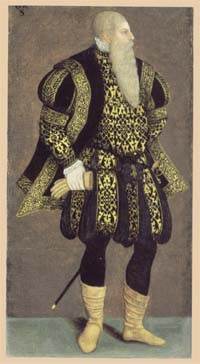 Gustaf Vasa
Gustaf Vasa |
One morning when the parish were on their way to church they found that on the crucifixes had been cut down. The people thought that their new vicar Jöns Joannis, who was a good friend of the king, was the man to blame and chased him to through him over the church wall. He managed though, however, to let himself loose and escaped. Apart from this occurence, the relationship between the vicar and the villagers was good and the relationship got even better when two of the vicar's daughters married into two of the wealthiest farmer families in the parish. Jöns Joannis lived until 1558 and was succeeded by his son in law, Erik Andersson (Ericus Andrae). Erik came from Nor, one of the richest estates of the parish. He bought during his time as a vicarage the neighbouring manor Kungsgården, the old Wijbol.
The vicarage during the 17th century and a royal visit
In 1603 Erik Andersson left the living in position for his son Jöns Eric. Erik Andersson was living his last years with his son and died in 1618. Jöns Eric was through a royal letter promised that his son Johan Jönsson would succeed his father as a vicar, but the son passed away three days before his father in May 1637.
A new family moved to the vicarage. A member of the parish and also son to a farmer from Hammarby (and brother to the in Sweden well known Master Samuel Hammarinus), Ericus Benedicti Hammarinus, became the new vicar. He looked into having the main building refurbished. The previously very dark house became light, nice and comfortable and glass windows were installed. He held however his position for only six years when Martinus Nicolai Holm took over. During Martinu's period as vicar, the vicarage was visited by the young queen Christina. Before the royal visit, the large hall where the queen was to stay, was refurbished and two glass windows were installed. Vicar Holm was succeeded by Marcus Simming who married Sara, the daughter of in Sweden very famous "Stormor i Dalom" (Great mother of Dalom).
The houses of the vicarage were rebuilt and refurbished time after time. During the 17th century the manor got a more "closed" look than before. Spaces between houses became narrower. A stable was built in the north west corner of the manor building. The stable was intended for the travelling guest's horses and held twelve stalls. The vicarage was a hostelry of great degree. The guests from "the big world" had many storied to tell and brought greetings from friends and family all over the country.
In 1670 Hans Wesslander became the new vicar in Ovansjö. Many travelling people who passed through Kungsgården visited the vicarage maybe to get a piece of bread or to have a chat. This was during the time for witch trial and people had big worries about witchcraft. The vicarage was for example in 1675 visited by a woman from the county of Dalarna who had been accused as being a witch.
Hans' son Lars Wesslander was the next vicar to move into the vicarage. 1695 was the first of many difficult years of starvation, which the people in the area had lived through. The illnesses following the famine took many lives. Large groups of starving people wandered from Dalarna and other places. Some of them were found dead along the roads and were buried in unmarked graves on the cemetery. 140 people in the parish died from "spotted fever". The worst year of all was 1697 in which also the vicar, Lars Wesslander, only 37 years old was snatched away from his young wife Barbro Silieström.
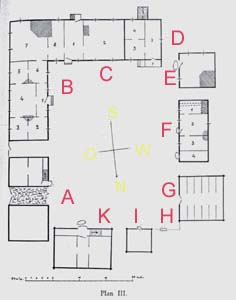
Ovansjö vicarage (the manor) after re buildings in 1712 and 1726 until 1765. A. Door shed with wood shed towards north and loft shed towards south B. Manor house: 1. Entrance, 2. Library, 3. Hall room, 4. Hall, 5. Bedroom, 6. Dinging room, 7. Bakery, 8. Kitchen or cookery C. The large house: 1. Large entrance, 2. Large hall D. Cellar house: 1. Entrance, 2. Long hall, 3+4. Hall, 5. Cellar E. Brewery F. 1. Sauna, 2. Hall, 3. Servant house, 4. Secret house, later mangling room G. Main stable with 12 stalls for visitor's horses H. Gate to the cow house I. Hen house K. Sheds with upper night rooms |
18th century
Lars Wesslander was succeeded by his son in law, senior master Smaraeus, who passed away already in 1705. The following vicar was Lars Torger who lived until 1719. After his death, a new rule was put into practice. An unmarried priest was offered to marry a widowed vicars wife or a daughter to a vicar who had passed away and was thereafter entitled to the vicarage. This new rule was applied in Kungsgården and the military vicar at the regiment of the county Hälsingland, Petrus Backmark, married the widow of Lars Torger, Catharina Norman. Backmark became a beloved husband and vicar, but died only ten years later in 1730. His successor was, following a very exciting election, the parish's 68 year old assistant vicar, Johannes Jernberg.
After vicar Jernberg followed vicars Alrot and Hedman. It was vicar Hedman who prepared for the major re built of Ovansjö church in 1760. 1764 entered Johan Lexelius as the vicar. The buildings of the vicarage were at that time rather defective. A decision was made that the houses facing south, which originated from the middle ages, was to be torn down and a new house was to be built on the old ground. The vicar himself offered to pay some of the costs. The restoration was however interrupted because the squire of Kungsgården, David Uhr, was against the building. The parish took the side of their vicar and the ban was raised in October 1766. The building work was continued, but vicar Lexelius was never able to move into the new vicarage since he passed away in 1767 following an illness.
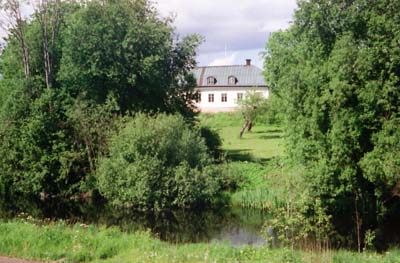
Vicars in Ovansjö from 1870:
- 1870-1904: Olof Hjalmar Humble
- 1905-1927: Johan Gustaf Ekelöf
- 1927-1946: Harald Nyström
- 1946-1961: Karl Sundbom
- 1961-1968: Oscar Solén
- 1968-1978: Carl-Adolf Murray
- 1978-1988: Bo Strömberg
- 1989-1995: Erland Johansson
- 1996-1997: Ulla Lindgren
- 1997-2004: Gunilla Fluur
- 2004- : Karl-Erik Tysk
For further details about the vicarage please contact Ovansjö parish.
Read more about:
